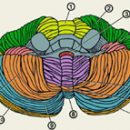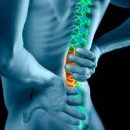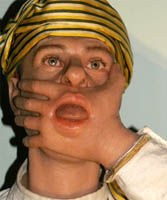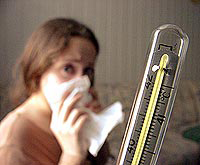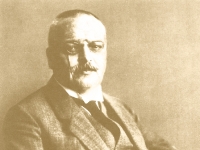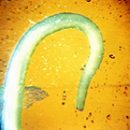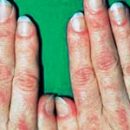Tiki are fast repetitive movements that do not obey the will of a person and are involuntary. Tiki in adulthood may occur with excitement or relaxation. In most cases, ticks arise in strictly certain parts of the body.
Content
Concept of ticks in adulthood
Tiki - repetitive fast ripple stereotypical, but neurotic involuntary, movements, usually involving a limited muscle group. The patient can be a strong force at a certain time to suppress ticks, but usually it is achieved by the price of rapidly increasing internal stress, which inevitably breaks through, causing a short-term ticose «Bury».
Ticks may precede the feeling of an insurmountable need to make a movement that creates the illusion of arbitrariness of teak. Tiki in adulthood increases with excitement or in a state of relaxation, but decrease when distracting attention or, on the contrary, at a concentration of attention on certain activities. As a rule, teaks arise in strictly defined in this patient parts of the body. Each patient has its own individual tick repertoire that changes in time.
Classification of Tikov
In medicine, there is a classification of ticks, single out motor and vocal, simple and complex ticks. Examples of simple motor ticks can be flashing, twitching head, shrug shrugs, stomach pulling, samples, examples of complex motor ticks - strikes on their body, bouncing, repetition of seen gestures (echopraxia), vulgar gestures (copropraxia).
Simple vocal ticks include curvature, snort, flickering, whistle, to complex ticks - the repetition of the only heard words (Echolalia), involuntary shouting of the grave obscene words (coprolia). The prevalence of ticks are local (more often in the field of face, neck, shoulder belt), multiple (multi-typhocal) or generalized.
Causes of Tikov
Select primary and secondary ticks. Primary ticks arise in the absence of other pathology and usually arise in children's and adolescence in connection with the violation of the ripening of motor control systems. In case the violations do not pass, ticks are preserved in adult condition. In the origin of the primary ticks, an important role seems to belong to hereditary factors. A group of primary teaks arising in the absence of a certain primary disease is divided into:
- Transient motor and / or vocal ticks, ongoing less than 1 year
- Chronic motor or vocal ticks that are saved without long remission for 1 year and more
- Turater syndrome, which is a combination of chronic motor and vocal teaks
Secondary ticks may occur at any age. The reason for less frequently found secondary ticks can be:
- Brain damage to the reception of drugs (anti-convulsants, neuroleptics, etc.)
- brain-brain injury
- Encephalitis
- Vascular diseases of the brain (strokes, atherosclerosis)
- Carrying gas poisoning
- Mental diseases (autism, schizophrenia)
The main manifestations of Tikov
 Tiki usually manifests itself aged 5-15 years, but in the quarter of cases, pronounced ticks are saved throughout life. Boys suffer in 2-3 more often than girls. First of all, local ticks appear on the face (frequent blinking, clogging, nose), and then gradually spread down, acquired generalized character, consistently involving the muscles of the neck, shoulder belt, upper and lower limbs, torso. Over time, the complexity of hyperkinosis increases, complex motor, less commonly complex vocal ticks, in particular coprolia, are attached to simple ticks. Subsequently, a wave-like flow with periods of enhancement and weakening hyperkinosis, sometimes with long-term remissions. The severity of Tikov usually reaches a maximum in adolescence, in the period of Pubertata, and then decreases in the youth and young age. With the onset of adult in a quarter of cases, ticks disappear, half of the patients are significantly reduced. Only in a quarter of cases, pronounced ticks are preserved throughout the life, but in this case they, as a rule, do not lead to the disability of the patient.
Tiki usually manifests itself aged 5-15 years, but in the quarter of cases, pronounced ticks are saved throughout life. Boys suffer in 2-3 more often than girls. First of all, local ticks appear on the face (frequent blinking, clogging, nose), and then gradually spread down, acquired generalized character, consistently involving the muscles of the neck, shoulder belt, upper and lower limbs, torso. Over time, the complexity of hyperkinosis increases, complex motor, less commonly complex vocal ticks, in particular coprolia, are attached to simple ticks. Subsequently, a wave-like flow with periods of enhancement and weakening hyperkinosis, sometimes with long-term remissions. The severity of Tikov usually reaches a maximum in adolescence, in the period of Pubertata, and then decreases in the youth and young age. With the onset of adult in a quarter of cases, ticks disappear, half of the patients are significantly reduced. Only in a quarter of cases, pronounced ticks are preserved throughout the life, but in this case they, as a rule, do not lead to the disability of the patient.
Treatment of Tikov
In a long time, the task of treatment is not suppression of teaks, but creating conditions for the normal life and education of self-control. In many cases, medication is not required. To suppress Tikov, neuroleptics, nootropic agents or light psychostimulants are used in individually selected doses. At all stages of the disease, psychotherapy methods are important.

